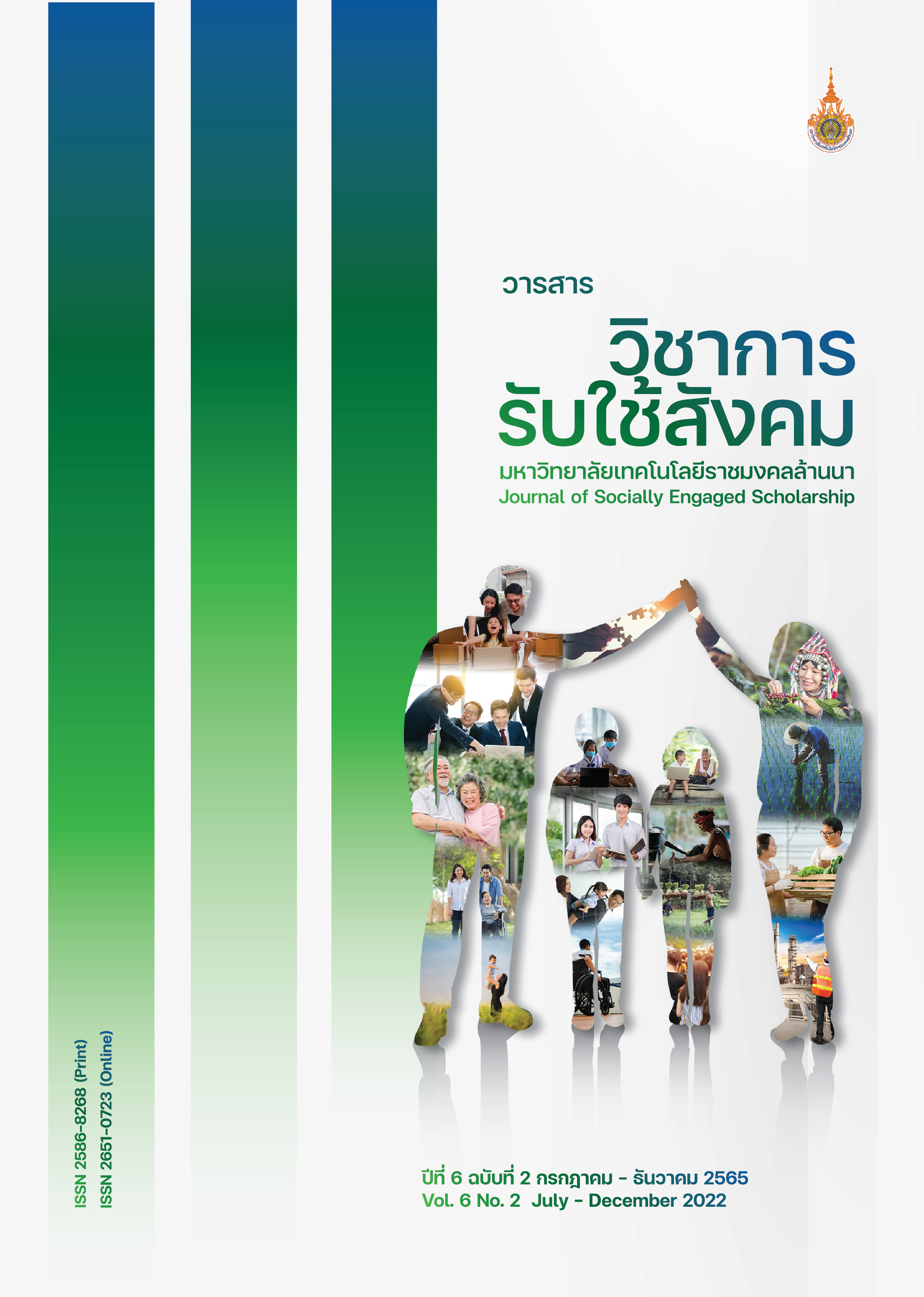Electrical Energy Management of Off-Grid Power System for Sustainable Highland Area Community
Main Article Content
Abstract
The objectives of this research were to 1) inspect and maintain electrical systems of the community to obtain the standard and safety 2) obtain the electrical system mapping and 3) measure and monitor the electricity consumption and suggest an appropriate pattern for electrical energy management for the community. The use of energy meters in combination with the Internet of Things (IoT) technology allows real-time monitoring of the amount of the community's electricity consumption (daily/weekly/monthly/yearly). In a three-phase system, the results showed that there was an unbalance of each phase related to the electricity consumption behavior of different loads, with 59.76 percent of the peak energy consumption being in phase A, 31.08 percent in phase B, and 9.16 percent in phase C. The community's electricity consumption behavior is consistent, and the peak load demand occurs between 6:00 a.m. to 8:00 a.m. and between 4:00 p.m. to 10:00 p.m. The average daily electricity consumption was relatively low with only 9.4% of total daily electricity production, while the dummy load loss was relatively high at 70.6 percent. In addition, it was found that the community's electrical system was damaged, old, and deteriorated due to long-term use. Therefore, the improvement and maintenance of the electrical system have been carried out, and two appropriate pattern guidelines for community energy management are suggested: electrical energy management and economic energy conservation promotion for maximum benefit, for achieving an efficient balance between energy production and consumption, creating sustainable careers in the community, as well as promoting to be a learning center on electrical energy management for other communities with the same potential and social landscape.
Article Details
This article is published under a Creative Commons Attribution-NonCommercial-NoDerivatives 4.0 International License (CC BY-NC-ND 4.0), which allows others to share the article with proper attribution to the authors and prohibits commercial use or modification. For any other reuse or republication, permission from the journal and the authors is required.

